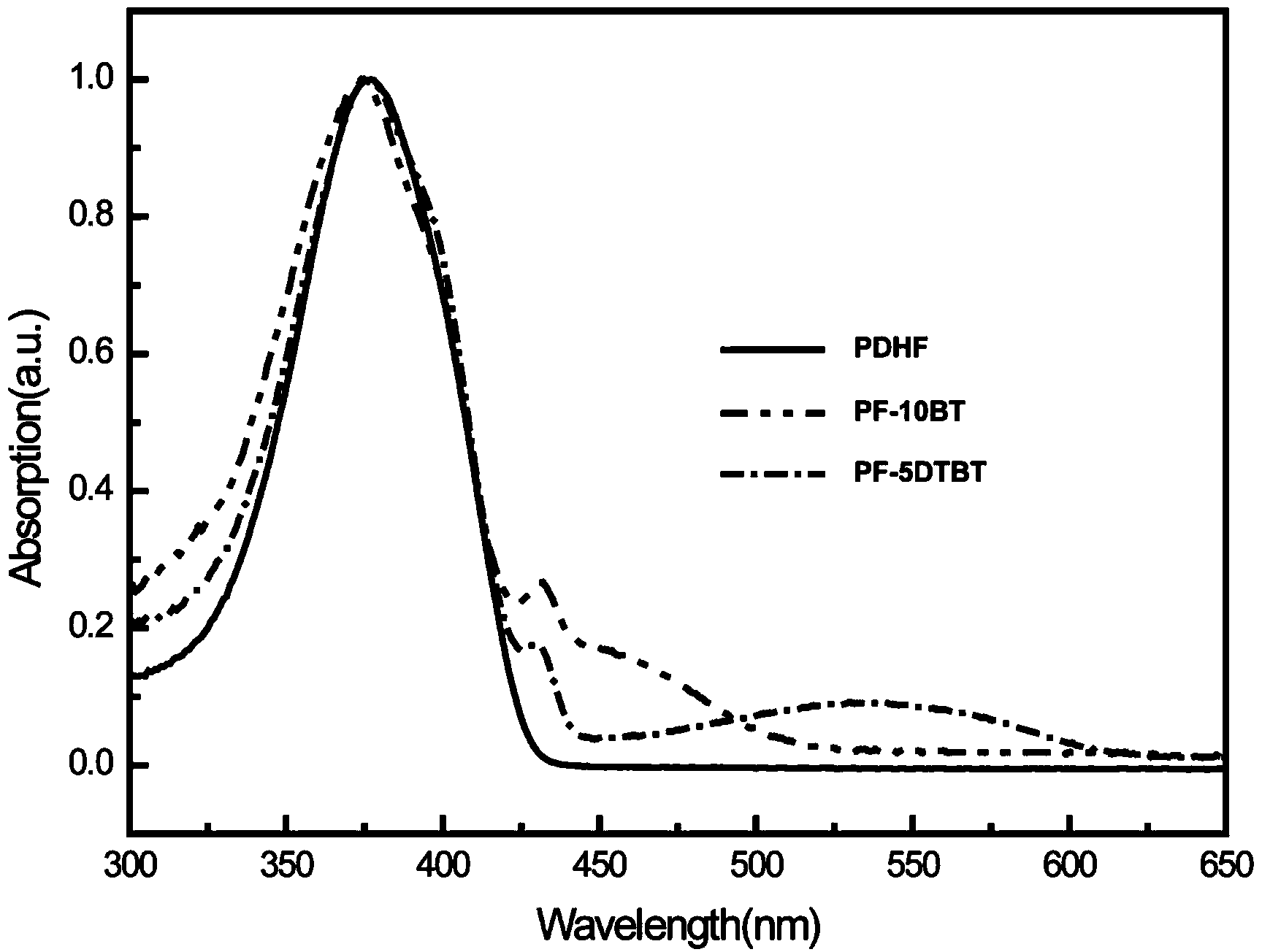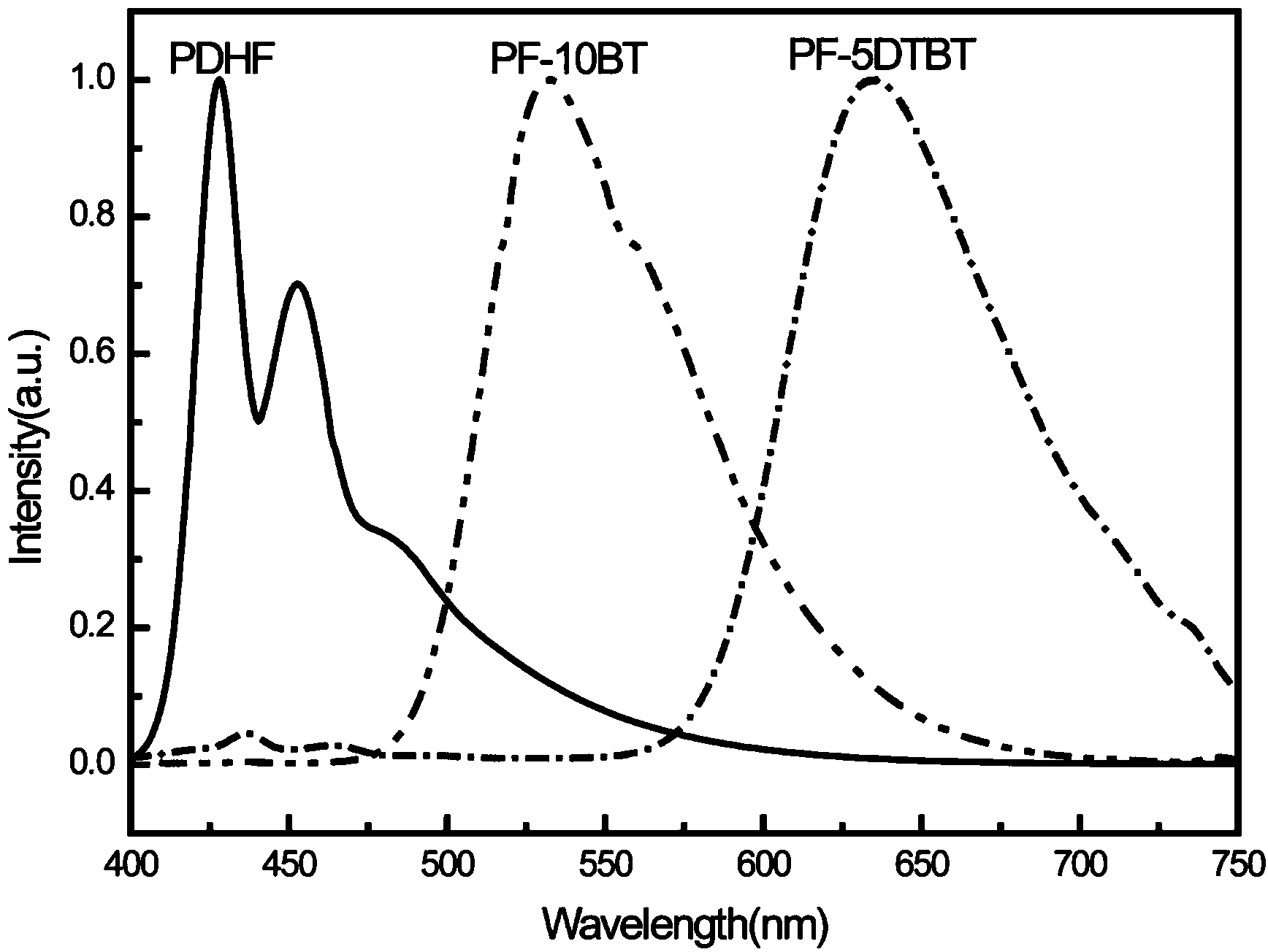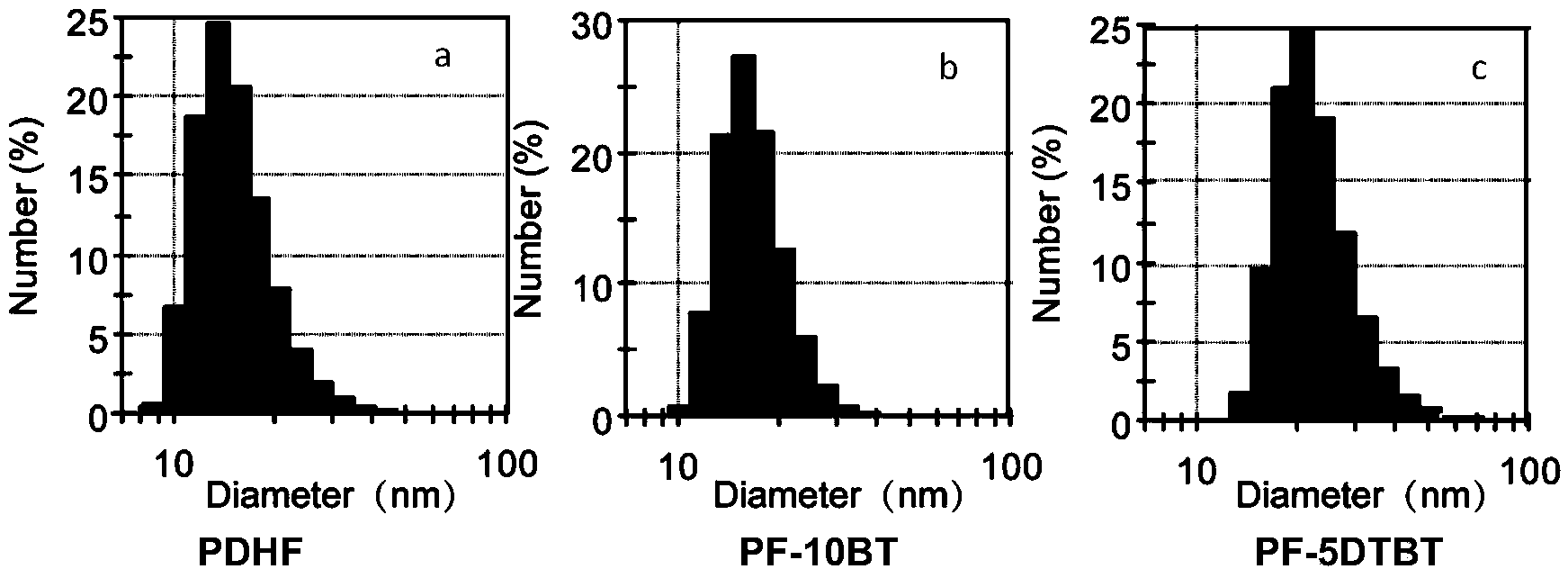Panchromatic fluorescent anti-counterfeiting ink based on conjugated polymer nano-particles
A conjugated polymer and nanoparticle technology, used in inks, household appliances, applications, etc., can solve the problems of unstable chemical properties and single color of fluorescent inks, and achieve the effects of stable properties, high luminous intensity and high fluorescent brightness.
- Summary
- Abstract
- Description
- Claims
- Application Information
AI Technical Summary
Problems solved by technology
Method used
Image
Examples
Embodiment 1
[0040] Embodiment 1: Preparation of fluorescent anti-counterfeiting ink based on PDHF, PF-10BT and PF-5DTBT conjugated polymer nanoparticles
[0041] Firstly, prepare a tetrahydrofuran solution of PDHF conjugated polymer at a concentration of 1.0 mg / mL; then prepare a tetrahydrofuran solution of polystyrene maleic anhydride (PSMA) at a concentration of 1.0 mg / mL. Then, the above solutions were diluted with tetrahydrofuran to obtain 20 mL of a mixed solution having a conjugated polymer concentration of 50 μg / mL and a PSMA concentration of 10 μg / mL. Then the above solution was thoroughly mixed. Then, with sonication, 5 mL of the mixed solution was quickly injected into 10 mL of water and sonication was continued for 2 minutes. Finally, blow N while heating on the heating platform 2 To remove tetrahydrofuran in the solution after injection, and continue to heat and concentrate to 5 mL. The concentrated polymer nanoparticle aqueous solution was filtered through a 220nm filter h...
Embodiment 2
[0046] Example 2: Absorption and fluorescence emission of polymer nanoparticle fluorescent ink
[0047] The three polymers PDHF, PF-10BT and PF-5DTBT obtained functionalized polymer nanoparticles by the "reprecipitation" method, which made their aqueous solutions extremely stable and remained clear for several months without any aggregation. Shen signs. like figure 1 As shown, the main ultraviolet absorption peak centers of the three polymer nanoparticle suspensions are around 375nm, which indicates that the final anti-counterfeiting pattern can be simultaneously excited by a single wavelength in the ultraviolet region. like figure 2 As shown in the fluorescence spectra, PFDH, PF-10BT and PF-5DTBT exhibit blue (430nm), green (540nm) and red (650nm) emission light, respectively. Using three primary colors, a range of luminescent colors can be obtained by combining RGB color modes, and printing is achieved using fluorescent inks of polymer nanoparticles, which gives a meanin...
Embodiment 3
[0048] Example 3: Particle Size and Morphology of Polymer Nanoparticles
[0049] The hydrated particle size of polymer nanoparticles is first measured by dynamic light scattering (DLS), as image 3 As shown, the polymer nanoparticles of PDHF, PF-10BT and PF-5DTBT have average diameters of 22 nm, 19 nm and 17 nm, respectively. In addition, the particle morphology and particle size of the polymer nanoparticles were also characterized by transmission electron microscopy (TEM), as Figure 4 As shown, the polymer nanoparticles are spherical and the particle diameter and DLS test results are basically consistent.
PUM
| Property | Measurement | Unit |
|---|---|---|
| Size | aaaaa | aaaaa |
| Size | aaaaa | aaaaa |
| Size | aaaaa | aaaaa |
Abstract
Description
Claims
Application Information
 Login to View More
Login to View More - Generate Ideas
- Intellectual Property
- Life Sciences
- Materials
- Tech Scout
- Unparalleled Data Quality
- Higher Quality Content
- 60% Fewer Hallucinations
Browse by: Latest US Patents, China's latest patents, Technical Efficacy Thesaurus, Application Domain, Technology Topic, Popular Technical Reports.
© 2025 PatSnap. All rights reserved.Legal|Privacy policy|Modern Slavery Act Transparency Statement|Sitemap|About US| Contact US: help@patsnap.com



